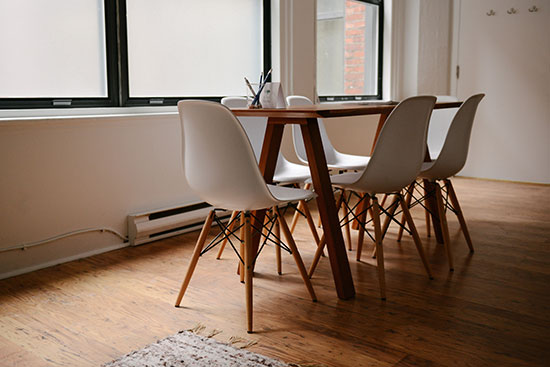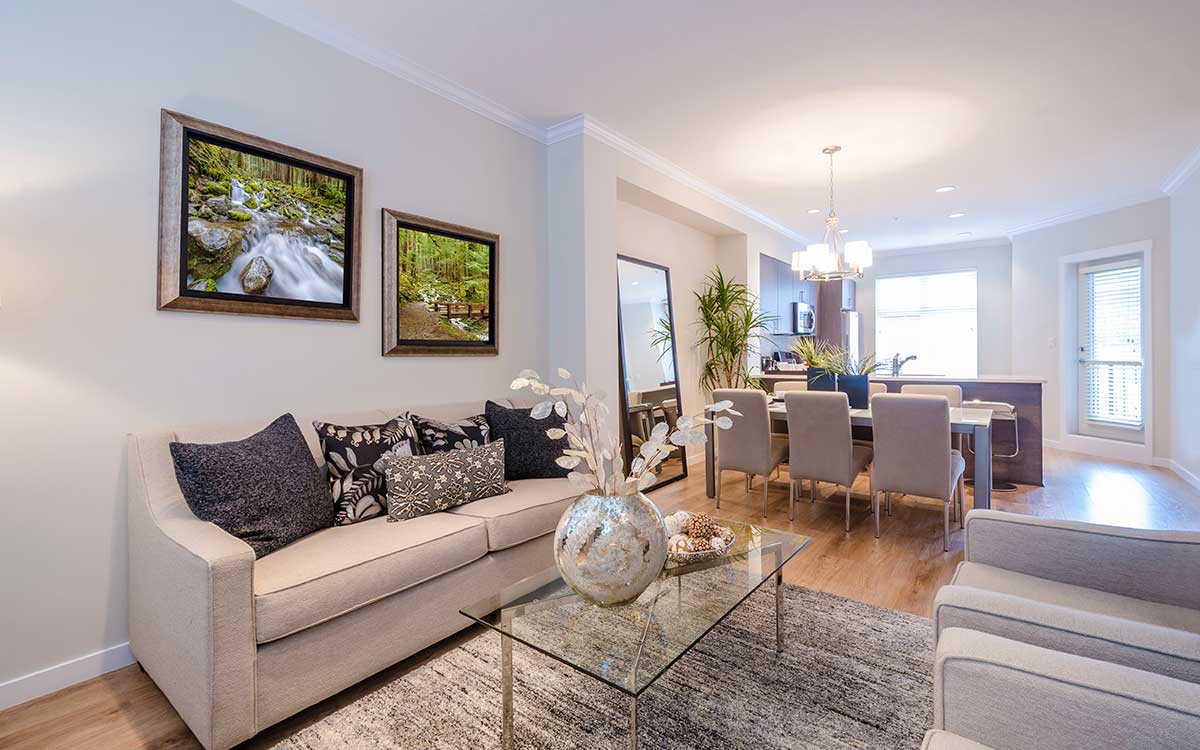Note: This post is part of our Home Sellers’ Journey series, where we walk you through every step of selling a home during peak season. For the first post on how to get started once you’ve decided to sell, please go to Six Steps to Take Now to Get Your Home Ready to Sell.
For those of you returning from our last post, you already know to get started on repairs to the home and contact Homie so that your home can be listed, 1) without a real estate agent, and 2) without paying thousands of dollars in real estate agent fees. Once you enter your information, you’ll be contacted about all of the details before the listing is live. Booyah. You’re already saving money.
Before making your listing live, one of the first things we will do is send a professional photographer to take pictures of your home at no extra cost. We told you. We’ve got your back. But there is a step you are in charge of.
You prep the house visually, a process called staging.
Staging is arranging your home to show it off best, both during photo-shoots and during walk-throughs by potential buyers.
They say that in sales, appearance is everything. Yes, buyers know that your belongings will leave the home after the sale is final, but that doesn’t mean they’re capable of envisioning the house without your things. Clean lines, plenty of light, a lack of clutter—attention to details like this can affect your home’s sale price and how quickly it sells. Do yourself a favor and spend the effort to stage.
De-clutter and de-personalize
 Model homes don’t have piles of only-kind-of-broken power tools or an elk-themed calendar with penned-in appointments for the month. Guess what? Neither should your home.
Model homes don’t have piles of only-kind-of-broken power tools or an elk-themed calendar with penned-in appointments for the month. Guess what? Neither should your home.
Now, before you get offended, let me state right off that I get it. You own your belongings for a reason—you like them. Well, calm down, because you still get to own them. You’re just moving them so they won’t be a distraction from the item you want getting all of the focus: the home you are selling.
Put your home on a pedestal so buyers can’t miss it!
Clear away items, stashing them in semi-permanent storage at a neighbor’s house or inside boxes in a non-conspicuous area. While you’re at it, empty out some closet space. That way, when you have a home showing, you can tuck away last-minute clutter items like Jill’s homework and Avery’s jar of pet ladybugs. You’ll likely need these items soon—though you may not want them—and having them in a closet is more handy than having to search through boxes.
Next, take down all decorations that you believe an interior designer would nix. That means that a good portion of your posters, refrigerator magnets, and mantle-top pieces need to go. Actually, who are we kidding? Take down all of the refrigerator magnets. Remove religious items and family photos. You want the house to view like a template, on which potential new owners can envision how their personal stamp would look.
Trim, but don’t clear, furniture
Buyers often have a parent, friend, or agent with them during a home tour, not to mention every member of their family; and they often stick together. This means a lot of bodies inside each room. Take a minute and inspect a bedroom inside your house. Can eight people gather inside it? If visitors don’t fit comfortably during the majority of the excursion, your home will be remembered as cramped and small. Give people space to walk around by getting rid of furniture. Professional home-stagers may remove up to half of the furniture in a house to improve its feel. If you think you’ll need it at your new place, consider getting a storage unit to house your things until your home is sold.
Trim, yes, but don’t get rid of everything. Empty homes feel small—sometimes as small as cluttered homes.
The trick is to allow enough room for visitors to roam and feel like they’ve explored the home, while giving a sense of how furniture fits in each space. Think of it like laying a maze with broad walkways. Leaving a bed inside a room is like inviting interested buyers to walk around and explore the other side of it. Once the area has been explored, the brain perceives the space as more “known.” Visitors have an intuitive awareness of how many strides were required to cover each section of the house—many more strides for a furnished home than an unfurnished one. If you have already moved out, you may consider renting a few staple pieces to place throughout the home.
Focus on your bathroom
Bathrooms have a stinky reputation. The last thing you want is a potential buyer wondering how long your moldy-smelling towels have been in there. Buy white towels, white rugs, some fancy soap and a new, plain shower curtain. Add a hint of color with a simple vase or other decoration. You might love these new additions to your arsenal of bathroom décor anyway!
Kitchens sell homes
You’ve already de-cluttered. Now go to your kitchen and give it an even more critical eye. Is there any item on the counter besides a decorative coffee maker or attractive toaster? If there is, remove it. Consider painting the backsplash or even upgrading to tile. Wipe down the outside of the cabinets. Wash and dry the sink so it’s free of water stains. Refrigerators should be blank on the outside. Leave out a plate of cookies for extra points!
Bust out, buy or borrow key items
- Mirrors. They make space look bigger and show off how the buyers will literally look inside the home should they purchase it.
- Lamps. Lighting is your friend. The more lighting options in a room, the merrier.
- Landscape or abstract art with bold colors. One or two pieces per room are plenty.
Don’t forget curb-appeal
The front of your home is the first thing potential buyers will see. Sweep, mow the lawn, and plant flowers if the season is right. Spray the house free of dirt and fix anything that’s broken. De-clutter the yard. Often, our homes have bikes, garbage cans, and scooters piled around them. Move everything besides decorations to the back of the home.
Last minute to-do’s
You’ve done the hard part and now your home is ready to show. Great job! Now, try not to stress. No house will be perfect. You’ve come a long way in showing your home well and buyers will sense and appreciate that. Here are the last few to-do items. Get to what you can and pat yourself on the back.
- De-clutter
- Set the thermostat to a comfortable temperature
- Turn on all lights to make the home look bigger and more inviting
- Clean the mirrors and most conspicuous windows
- Set the table with nice plates and silverware for that extra wow reaction
- Bake cookies or light fragrant candles
- Walk the path of your visitors, from the curb to the front room and beyond, making minor fixes as you go
- I keep talking about not stressing, but seriously? Don’t forget to clean the toilets. Deal. Breaker.
Check back here on the Homie Blog for the next installment of the Home-Sellers Journey. Coming soon: Got a Home for Sale? Don’t Call it Cozy. To get started selling your home, contact Homie today.

